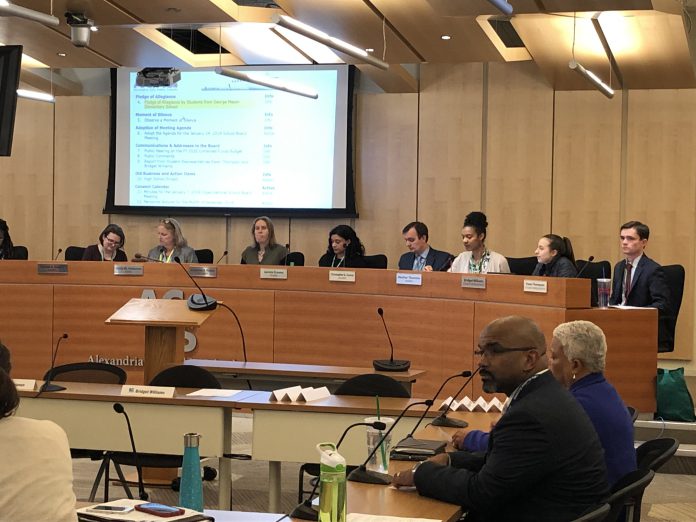Bridgette Adu-Wadier
As of fall 2018, the population of T.C. Williams High School has reached 3,959 students. It is the largest four-grade high school in Virginia, and ACPS is bracing for an additional 1,200 more students to enroll along with the 860 current students at Minnie Howard.
The High School Project was launched to achieve the goal of reducing the T.C. King Street Campus population down to 2,900 as well as redefining the Alexandria high school experience. On January 24, the School Board held two votes to solidify the planning process.
The School Board voted unanimously to proceed with the planning phase of the amended high school project plan. Along with this, the members also approved a motion to rebuild the Minnie Howard campus as part of Superintendent Dr. Gregory Hutchings’ recommended the Connected High School Network. In a 5-4 vote, they mandated that the Superintendent provide a cost-benefit analysis of a second high school.
A Connected High School network would have multiple campuses distributed throughout Alexandria that would be linked to the main campus. In a connected high school model, each campus would house one area of study, program or interdisciplinary study.
“Having a Connected High School network really affords us the ability to adjust to the population. It doesn’t keep us isolated into having one concept or one way. [It] also allows us to make more cost-efficient decisions in regards to how we address our capacity issues,” Hutchings explained during an episode of “The High School Project: Inspiring a Future for Alexandria”, the ACPS podcast on the secondary school expansion project.
The plan will expand the incoming high school population into existing specialty campuses such as the ACPS Satellite Campus. The upcoming Early College Program in partnership with Northern Virginia Community College will include 400 students and offer students the ability to pursue an Associate’s Degree. Other programs such as Career and Technical Education (CTE) would evolve into separate campuses as well. These specialty campuses would mimic the structure of the International Academy and the Chance for Change Academy, which are both learning communities that allow for students to succeed in a smaller setting.
Though this vision aims to cater to students’ diverse and changing needs to stand the test of time, T.C. students still have concerns about the distributed campus model.

This vote will soon get the ball rolling for the long-demanded secondary school expansion, but it still leaves many unanswered questions for T.C. students. What if a student goes into the STEM program but wants to switch out to do Culinary Arts at the (CTE) campus instead? Sticking to a single campus separate from other communities and career opportunities is a heavy commitment for a ninth grader. Would he be able to move out? If so, would the CTE campus accept his STEM credits? How would graduation requirements change as a result of this new model?
“Our concern about this proposal is that it is very unspecific,” Bridget Williams, T.C. senior and School Board Student Representative.
According to Ewan Thompson, another TC junior and School Board Student Representative, there would have to be some flexibility between the campuses for easy flow of transportation.
“There would have to be some way for students to switch between subject areas,” he added.
The vote to rebuild Minnie Howard has made it certain that the ninth grade campus will not be isolated from the process. The School Board has not decided what will replace the current building. Some support it being converted into a separate campus for ninth and tenth graders and reserving the King Street Campus for the upperclassmen while others want it rebuilt into a second high school to relieve pressure.
“We are going to need to make sure that we are taking the initiative now and being proactive so that we don’t become vulnerable to the significant growth and limit the timing needed to address these concerns,” said Hutchings. “We want to make sure that we are following through with what we said two years ago. That is, we would have a decision at the end of 2018, [or] beginning of 2019 to go out into the community and begin the planning phase starting this summer.”
The city and city manager have allocated $15 million to for the next stage, which will be planning and looking at sites. This stage will determine tangible options for program design, locations and cost options by spring 2019.



